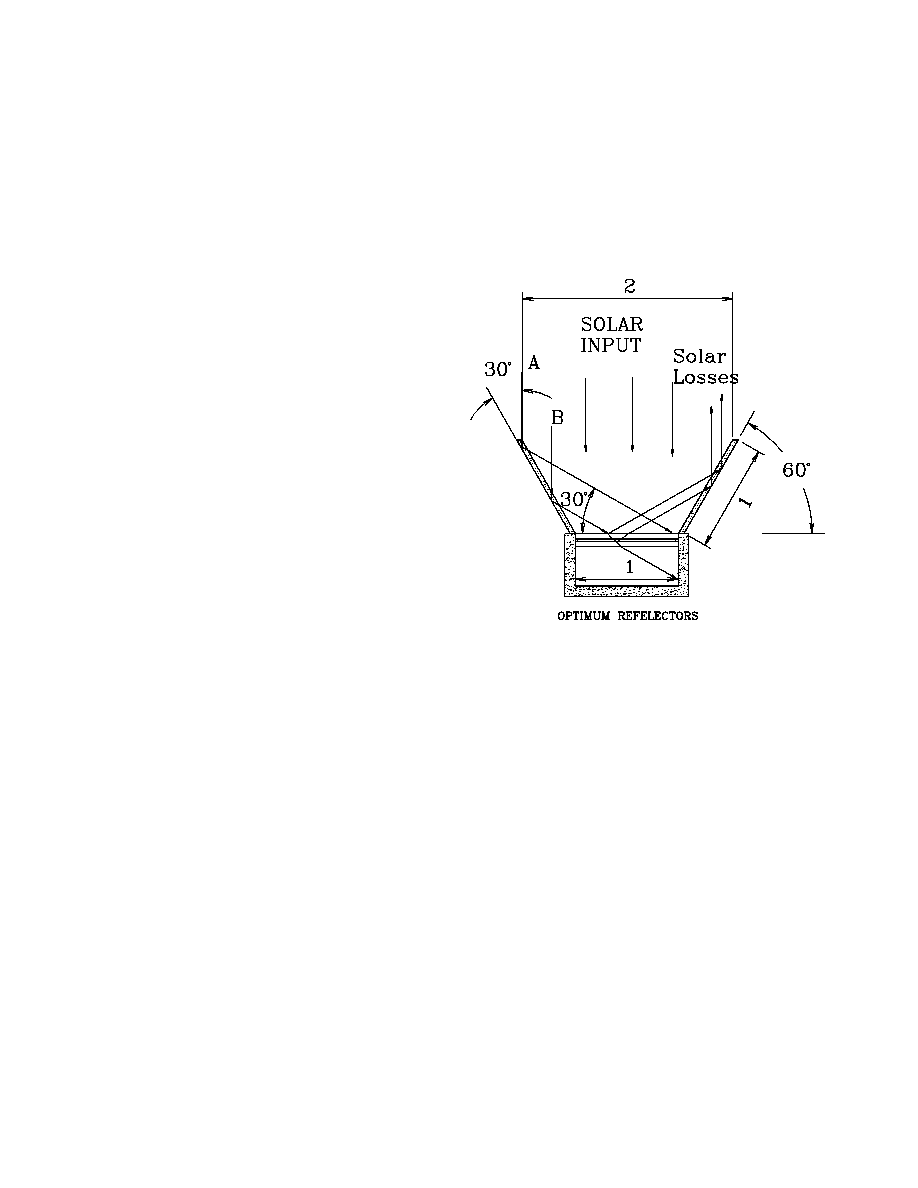
3
degrees from the vertical (or 60 degrees from the horizontal) with each reflector equal to the width of the
cooking chamber will allow all the light striking the reflectors to enter the cooking chamber. With this
geometry you can still fold the mirrors!
An optimum sized cooker will cook just about anything you put in it. Extending the reflectors to
make the collector larger will produce more heat and will cook food faster.
If you extend the
reflectors the cooker becomes less portable. Doubling the length of the reflectors increases its width by
only 20% because the angle must be steeper. The shallow sun angle on the reflectors makes them more
reflective. The penetration into the cover glass improves somewhat because of the more vertical angle.
Of the five factors affecting a cooker's
cooking temperature three of them were thermal
loss. Transmitted losses are controlled with
insulation. Double glass covers have twice as
much insulation value as single glass covers.
Leakage losses are controlled with good tight
construction. The chamber should be well fitted
and protected from moisture on the inside.
Solar heat is transferred into the food by
three mechanisms. First by direct solar rays, that
is sunlight striking the food directly. This is
somewhat like a broiler. Second by convection,
that is by the hot air surrounding the food inside
the chamber. Third by conduction of heat from
the tray upon which the food rests. If the tray is a
heavy metal conductor such as steel or aluminum the sun's rays will heat the tray and conduct the heat
under the food like a stove. All three mechanisms combine to make the food cooking process very
efficient.
Finally, as the sun's energy is transferred into the food the thermal loss drops the oven's
temperature 25 to 50 degrees initially. This loss is only temporary.
As the food approaches the oven's temperature the aroma begins to fill the air, that's the whole
idea behind solar cooking.

